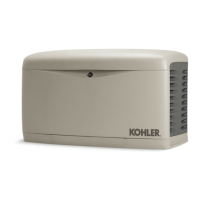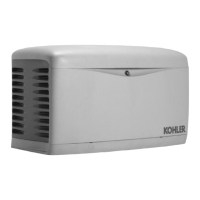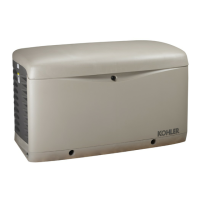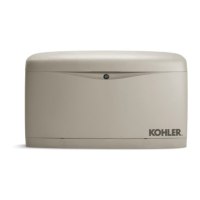How to troubleshoot inadequate fuel supply in Kohler Portable Generator?
- EErica ColeAug 20, 2025
Check for damaged primary or secondary fuel regulators, loose connections to the fuel solenoid valve, a damaged or closed fuel shutoff valve, an empty LP fuel tank, or other problems with the fuel supply. Check the fuel supply pressure to the generator set.










